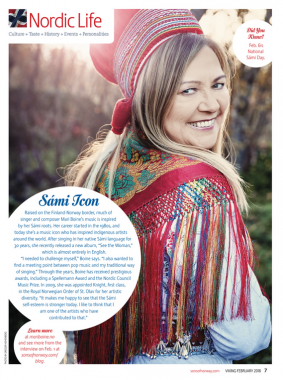
Q: What inspired you to make an all-English album, “See the Woman”?
A: I have been singing in my native language for 30 years. I guess I needed to challenge myself a bit. I also wanted to find the meeting-point between pop-music and my traditional way of singing. I am experimenting, as I have always liked to do.
Q: What was your favorite part about creating it?
A: It’s wonderful when all the melodies and the lyrics start to come together. It’s a fun part of the creative process. To build a new album is such a wonderful process when you do it with musicians you really work well together with.
Q: Having grown up in a small village, how does it feel to have an international presence as an artist?
A: I have gotten used to it after so many years. But it’s still crazy. I think it is great to know both worlds — to have access to the small “world” close to nature and to the urban jungle. I feel rich by being able to move between these different worlds. A beautiful quote from the poems of Sámi artist Nils Aslak Valkeapäa is Mu ruoktu lea mu váimmus (My home is in my heart, and it moves with me).
Q: How has your Sámi upbringing influenced your music?
A: I like to think that my songs have been an important part in the healing process that my people have experienced for the last 30 years after the dark years of colonization. It makes me happy to see that the Sámi self-esteem is stronger today. I like to think that I am one of the artists who have contributed to that. And of course, like for every other artist in the world, one’s background is a big part of one’s music and art.
